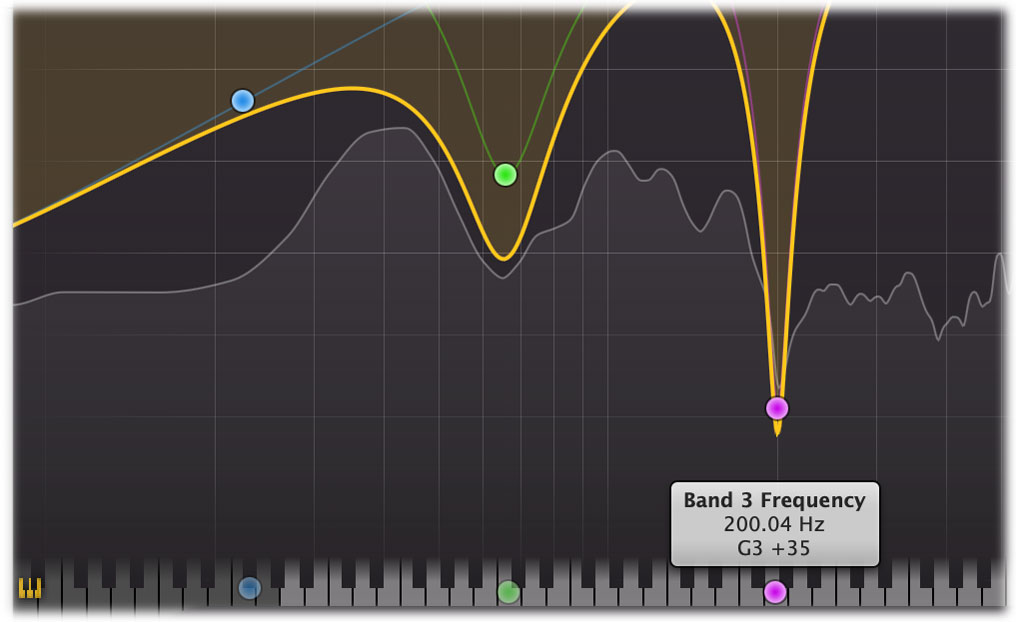FabFilter Pro-Q 4 online help
Table of contents
Go to sectionFabFilter Pro-Q 4 Help
Introduction
Using FabFilter Pro-Q 4
Full Screen mode, resizing and scaling
Presets
Purchasing FabFilter Pro-Q 4
Support
Piano display
Using the Piano Display button at the bottom left of Pro-Q's interface, just above the bottom bar, you can toggle between the normal frequency scale and a piano keyboard display, via which band frequencies can be adjusted as well. The highlighted keys correspond to an 88-keys grand piano layout, ranging from A0 (27.5 Hz) to C8 (4186.01 Hz).

For every band in the display, there is a corresponding dot on the keyboard. You can interact with the dots in two ways:
- Click the dot once to quantize the associated band's frequency to the exact musical note.
- Click and drag the dot to change the frequency while keeping it quantized to musical notes.
While the piano display is active, parameter value displays that show a band's frequency will also show that frequency as a musical note (including cents offset). Note that at any time, also if the piano display is not showing, you can enter frequencies as musical notes. For example, you can double-click on the Frequency knob in the band selection controls and type "D#5 +13", or "A4".
Tips
- To quantize a frequency without using the piano display, just double-click a curve dot in the display or the Frequency knob in the EQ controls, and enter a value like "A4" or "C#2".
- Pro-Q 4 displays the C4 key as middle C, following the most used Roland standard. Note that some DAWs (e.g. Cubase) might use a different format, showing C3 as middle C (the Yamaha standard).
- By default, the piano display key that matches the frequency at the current mouse position is highlighted, and a small label shows its note number. You can turn this feature on or off by clicking Show Frequency On Hover in the Help menu.
Next: Stereo options
See Also
Overview
Display and workflow
